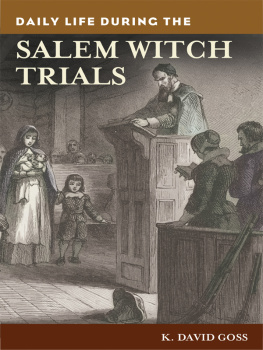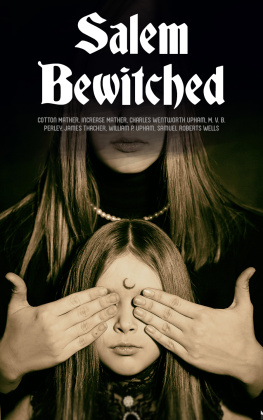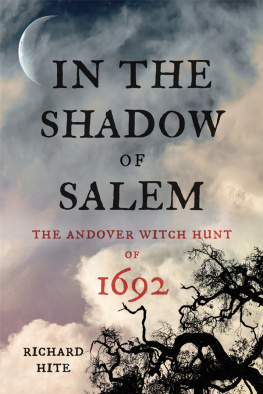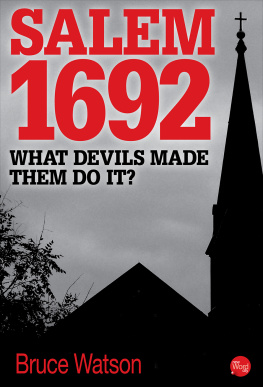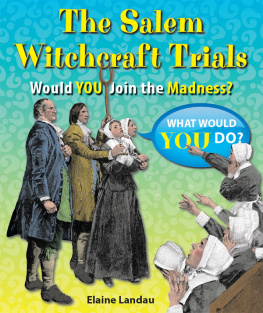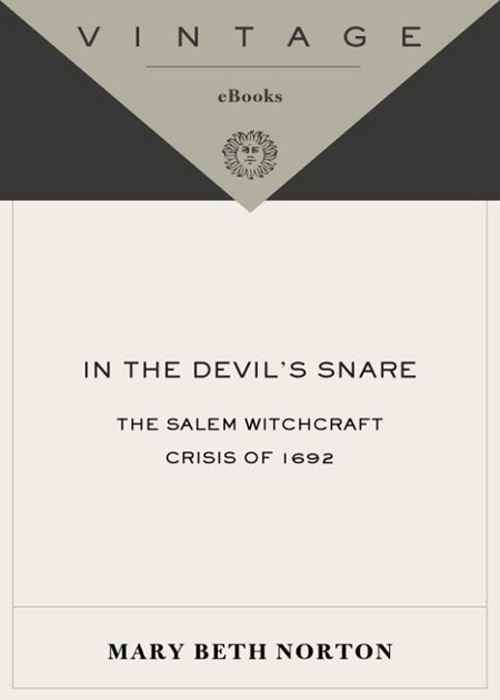
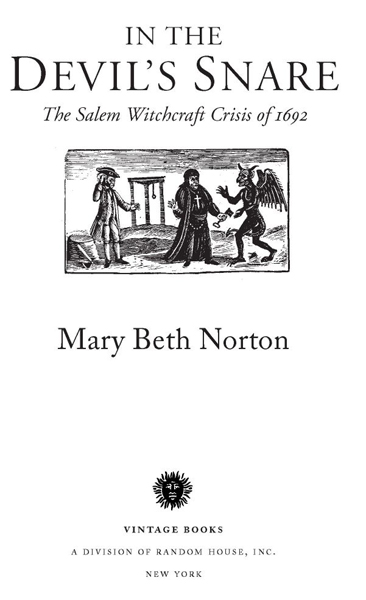
Table of Contents
For the other Americanists and the other women
in the Cornell history department, and especially for
I. V. (Itsie) Hull
Acclaim for Mary Beth Nortons IN THE DEVILS SNARE
A Los Angeles Times Best Book of the Year
A Boston Globe Best Book of the Year
A Newsday Best Book of the Year
Compelling.... Provocative and persuasive.... [This book] also provides a poignant reminder of how the perceived failure of leaders to defend their people against an external threat, then, as now, can lead to terrible efforts to purge the demons within.
Chicago Tribune
Dazzling, even suspenseful.... Norton, the master historian-detective, has pointed to a glaring clue about the origins of the Salem witchcraft crisis.
Fresh Air, NPR
What we have... is not merely a compelling study of Salem witchery, not merely a nuanced piece of archival research, and not merely an engaging retelling of a favorite seventeenth-century tale. We have a standard-bearer for American history.
Newsday
Brilliant.... It is difficult to communicate the full horror of what happened in such a dismal time in our countrys history, but Mary Beth Norton does a superb job.... Her conclusions are ground-breaking.
The Baltimore Sun
Introduction
How long have you been in the snare of the devil?
Justice of the Peace John Hathorne, 1692
SALEM. The word alone evokes persistent images in the minds of twenty-first-century Americans: the misogynistic persecution of women, hysterical girls telling tales of being tormented by specters, falsely accused witches bravely refusing to confess, evenerroneously women being burned at the stake. Few other events in colonial American history have so fascinated modern residents of the United States; few other incidents in the seventeenth-century Anglo-American colonies have been so intensively studied by historians. And yet much of the complicated Salem story remains untold. In the Devils Snare is my narrative of that untold tale.
The basic facts can be briefly summarized. The witchcraft crisis began in mid-January 1691/2, O.S.,1 when two little girls living in the household of the Reverend Samuel Parris of Salem Village (now Danvers), Massachusetts, began to suffer from fits that they and their elders soon attributed to witchcraft. In the months that followed, growing numbers of accusers claimed to be tortured by the apparitions of witches, and to see the ghosts of dead people charging the witches with killing them. Other accusersmost commonly neighbors of the suspectscame forward as well, to describe how they and their animals had been bewitched by the malefic acts of the accused. Around mid-September the crisis began to wane, and it limped to a close on November 5 with the filing of complaints against the last three witches to be formally charged. Legal proceedings extended from February 29, 1691/2 (the first official complaints), to late May 1693 (the final trials of suspects).
Those months encompassed legal action against at least 144 people (38 of them male), most of whom were jailed for long periods; 54 confessions of witchcraft; the hangings of 14 women and 5 men; the pressing to death of another man by heavy stones; and the deaths in custody of 3 women and a man, along with several infants.2 Throughout the crisis, the most active accusers were a group of young Salem Village and Andover women ranging in age from eleven to twenty, several of them servants (see appendix 3). Accordingly, as in no other event in American history until the rise of the womens rights movement in the nineteenth century, women took center stage at Salem: they were the major instigators and victims of a remarkable public spectacle.
Scholars have developed a variety of interpretations of the crisis. Some have detected natural causes for the girls visions of ghostly specters: ergot poisoning or, most recently, an encephalitis epidemic.3 One has argued that at least some of the accused really were practicing witchcraft and thus that some of the charges had merit. Several historians contend that the girls were faking their fits from the start, others that they were hysterical, angry, or delinquent adolescents.4 The influential Salem Possessed (1974), by Paul Boyer and Stephen Nissenbaum, attributes the crisis to long-standing political, economic, and religious discord among the men of Salem Village, denying the significance of womens prominence as both accused and accuser. 5
My narrative builds on the research and interpretations advanced in prior works on Salem; at the same time, it disagrees with many aspects of those interpretations. In addition to studying the trials, as have most other historians, I examine the broader crisis that produced the trials. Indeed, the search for documents to illuminate the origins and extent of that crisis has led me in directions I failed to anticipate when I first embarked on this project. Intrigued by the complex interrelationship of gender and politics in early America, I expected to base this volume largely on a feminist reinterpretation of familiar materials, primarily the court records published in the SalemWitchcraft Papers and other documents commonly consulted by Salem scholars. But I also wanted to learn how people in Essex County and New England in general (perhaps even in other colonies) reacted to the witchcraft allegations. Thus when I read published materials or visited archives, I cast my net widely, looking for correspondence and journals covering the entire period of the late 1680s through the early 1690s.6
What I found has led me to develop a new interpretation of the witchcraft crisis, one that places it firmly in the context of its very specific time and place: Essex County, Massachusetts, in the early 1690s. The countys residents were then near the front lines of an armed conflict that today is little known but which at the time commanded their lives and thoughts, as was demonstrated by the ubiquity of the subject in the letters and diaries I was reading. They called it the Second Indian War. Early American historians today term it King Williams War. Whatever the name, after 1688 that struggle with the French and the Indians for control of New Englands northeastern frontier dominated public policy and personal decisions alike. Historians have examined Salem Village itself, Massachusetts legal practice, and Puritan attitudes toward women, all of which provide essential background for comprehending the witchcraft crisis.7 In the Devils Snare, though, contends that the dramatic events of 1692 can be fully understood only by viewing them as intricately related to concurrent political and military affairs in northern New England.
Other scholars have touched on connections to the Second Indian War but did not explore them in detail. In the 1980s, I learned from Carol Karlsens The Devil in the Shape of a Woman and an article by James Kences that some of the afflicted girls of Salem Village were refugees from the Maine frontier. When I started my research, I expected the accusers familial origins to prove to be important for my analysis, but I had no idea that this book would become what it has: an exploration of the history of frontier warfare and its impact on the collective mentalit of an entire region. Yet the more I read the documents produced in New England in the last quarter of the seventeenth century, the more I realized that the evidence required such an approach
Next page



